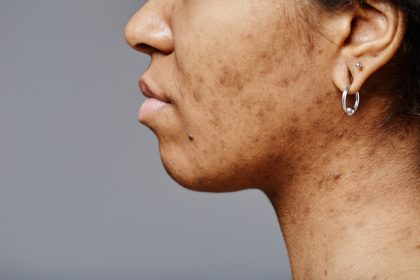A comprehensive guide to identifying common dermatological issues that often masquerader as simple acne
Many Americans unknowingly misidentify various skin conditions, attributing every bump, patch, or discoloration to ordinary acne. This widespread confusion can lead to inappropriate treatment approaches and unnecessary frustration when over-the-counter acne products fail to deliver expected results.
Dermatological experts emphasize that accurate identification of skin conditions is crucial for effective treatment. While some conditions resolve naturally, others require professional intervention to prevent complications or permanent damage.
Hidden bumps beneath the surface
Cystic formations represent one of the most commonly misidentified skin conditions. Unlike surface-level pimples, these deep-seated bumps develop when oil becomes trapped beneath the skin without reaching the surface. The resulting lumps can gradually increase in size and may persist for weeks or months without proper treatment.
These subcutaneous growths typically feel firm to the touch and lack the visible whitehead associated with traditional acne. While generally painless, they can cause cosmetic concerns and may require professional drainage or surgical removal for complete resolution.
The key distinguishing factor lies in their location and persistence. Surface acne typically develops a visible head within days, while cystic formations remain embedded in deeper skin layers indefinitely without intervention.
Inflammatory skin reactions
Contact dermatitis frequently masquerades as other skin conditions, presenting as red, blotchy patches that can appear suddenly or develop gradually. This inflammatory response occurs when skin encounters irritating substances or allergens, ranging from common household products to environmental triggers like certain plants or pet dander.
The condition manifests differently depending on the individual’s sensitivity level and exposure duration. Some people develop immediate reactions within hours, while others may not notice symptoms for several days following contact.
Treatment approaches vary significantly based on severity and underlying cause. Mild cases often resolve independently within a few days, while more severe reactions may require topical anti-inflammatory medications to reduce symptoms and prevent secondary complications.
Chronic inflammatory conditions
Eczema affects millions of Americans and represents a complex group of conditions characterized by persistent inflammation, dryness and irritation. Unlike temporary rashes, eczema tends to recur in cycles, with periods of relative calm interrupted by acute flare-ups.
The condition commonly affects specific body areas, including the face, scalp, hands and skin folds. Affected areas typically appear red, scaly and intensely itchy, leading many sufferers to scratch excessively and worsen the condition.
Management requires a comprehensive approach focusing on skin barrier restoration and trigger avoidance. Regular moisturizing, gentle cleansing practices and identification of personal triggers form the foundation of effective long-term control.
Distinguishing features of psoriatic conditions
Psoriasis creates distinctive silvery, scaly patches that differ markedly from other inflammatory skin conditions. These thick, raised plaques typically develop on the elbows, knees, scalp and lower back, though they can appear anywhere on the body.
The condition results from accelerated skin cell production, causing cells to accumulate faster than they can be shed naturally. This process creates the characteristic thick, scaly appearance that distinguishes psoriasis from other skin conditions.
Without appropriate treatment, psoriatic lesions can become painful and may crack or bleed. The condition often follows a chronic course with periodic flare-ups triggered by stress, illness, certain medications or environmental factors.
Pigmentation irregularities
Hyperpigmentation encompasses various conditions that cause skin darkening in localized areas. These dark spots can result from multiple factors, including previous inflammation, sun exposure, hormonal changes or genetic predisposition.
Post-inflammatory hyperpigmentation commonly follows acne breakouts, insect bites or other skin injuries. The affected areas appear darker than surrounding skin and may take months or years to fade naturally without intervention.
Age spots, melasma and freckles represent additional forms of hyperpigmentation, each with distinct characteristics and treatment requirements. Professional evaluation helps determine the underlying cause and most appropriate treatment approach.
Monitoring skin growths
Moles represent normal skin growths that can appear anywhere on the body throughout a person’s lifetime. Most moles remain stable and harmless, but changes in appearance warrant immediate professional evaluation.
The ABCDE criteria provides a framework for identifying concerning changes: asymmetry, irregular borders, color variations, diameter changes and evolving characteristics. Any mole exhibiting these features requires prompt dermatological assessment.
Regular self-examination helps detect changes early when treatment options are most effective. Monthly skin checks, particularly for individuals with multiple moles or family history of skin cancer, can prevent serious complications.
Managing benign skin growths
Skin tags represent common, harmless growths that typically develop in areas where skin rubs against skin or clothing. These small, flesh-colored protrusions commonly appear around the neck, underarms, groin and eyelids.
While medically insignificant, skin tags can cause cosmetic concerns or become irritated by clothing or jewelry. Professional removal methods include freezing, cutting or cauterization, all of which can be performed quickly in an office setting.
Building an effective skincare routine
Successful management of various skin conditions requires targeted ingredient selection based on specific needs. Gentle, science-backed formulations typically produce better results than harsh, aggressive treatments.
For inflammatory conditions, ingredients like colloidal oatmeal provide soothing relief while helping restore the skin’s natural pH balance. Barrier-repairing ingredients such as ceramides, glycerin and hyaluronic acid prove particularly beneficial for chronic conditions like eczema and psoriasis.
Addressing pigmentation concerns requires patience and consistency with proven ingredients like tranexamic acid and azelaic acid. Antioxidants such as vitamin C help prevent future discoloration while providing additional skin health benefits.
Understanding your specific skin needs and seeking professional guidance when necessary ensures the most effective treatment outcomes. Remember that individual responses vary, and what works for others may not be suitable for your unique skin type and concerns.















